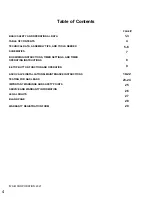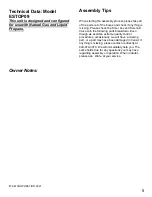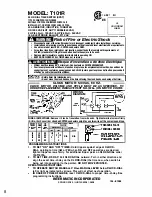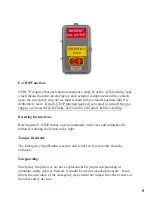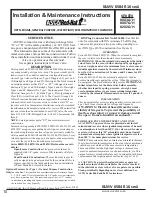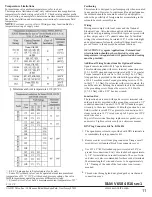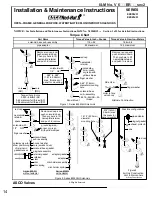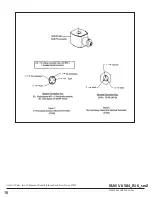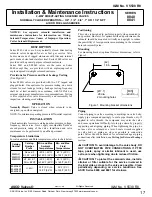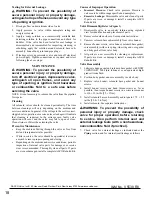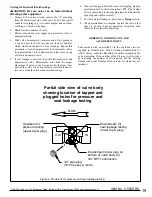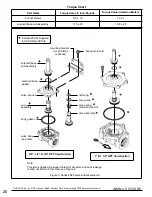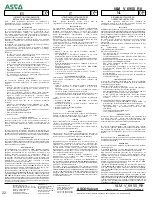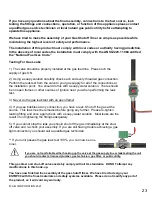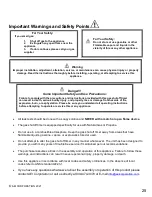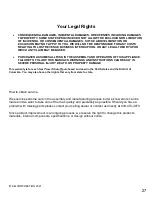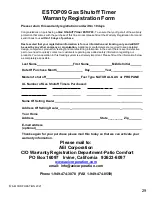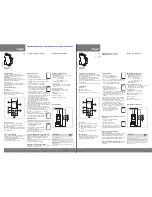
ASCO Valves®
All Rights Reserved.
I&M No. V 5538 R8
©ASCO Valve, Inc.®
50 Hanover Road, Florham Park, New Jersey 07932 www.ascovalve.com
E226722 - 5/12
I&M No. V 5538 R8
Installation & Maintenance Instructions
2-WAY DIRECT-ACTING SOLENOID VALVES
NORMALLY CLOSED OPERATION — 3/8” , 1/2” , 3/4” , 1” OR 1 1/4” NPT
AIR OR FUEL GAS SERVICE
Positioning
This valve is designed to perform properly when mounted in
any position. However, for optimum life and performance, the
solenoid should be mounted vertically and upright to reduce
the possibility of foreign matter accumulating in the solenoid
base sub
-
assembly area.
Mounting
For mounting bracket (optional feature) dimensions, refer to
Figure 1.
SERIES
8040
8041
[42]
1.66
Ø
.28 dia.
2 mounting holes
Figure 1. Mounting bracket dimensions
NOTICE: See separate solenoid installation and
maintenance instructions for information on: Wiring,
Solenoid Temperature, Causes of Improper Operation,
Coil or Solenoid Replacement.
DESCRIPTION
Series 8040 valves are 2-way normally closed direct-acting
solenoid valves designed for air or fuel gas service. Valve
bodies are made of rugged aluminum with trim and internal
parts made of steel and stainless steel. Series 8040 valves are
provided with a general purpose solenoid enclosure.
Series 8041 and EF8040 valves are the same as Series
8040 except they are provided with an explosionproof or
explosionproof/watertight solenoid enclosure.
Provisions for Pressure and Seat Leakage Testing
(See Figure 2)
Series 8040G valves are provided with two 1/8” tapped and
plugged holes. One upstream for pressure testing; one down
stream for seat leakage testing. Leakage testing frequency
shall be at least annually in accordance with NFPA
-
86 or
original equipment manufacturer recommendations. Testing
is also required after valve disassembly and reassembly for
inspection, cleaning or rebuilding.
OPERATION
Normally Closed:
Valve is closed when solenoid is de
-
energized; open when energized.
NOTE: No minimum operating pressure differential required.
INSTALLATION
Check nameplate for correct catalog number, pressure, voltage,
frequency, and service. Never apply incompatible fl uids or
exceed pressure rating of the valve. Installation and valve
maintenance to be performed by qualifi ed personnel.
Temperature Limitations
For valve ambient and fl uid temperatures, refer to chart below.
Piping
Connect piping to valve according to markings on valve body.
Apply pipe compound sparingly to male pipe threads only. If
applied to valve threads, the compound may enter the valve
and cause operational diffi culty. Avoid pipe strain by properly
supporting and aligning piping. When tightening the pipe, do
not use valve or solenoid as a lever. Locate wrenches applied
to valve body or piping as close as possible to connection
point. Valves should be checked for external leakage at piping
connections after installation,
see Testing for External Leakage
section.
CAUTION: To avoid damage to the valve body, DO
NOT OVERTIGHTEN PIPE CONNECTIONS. If PTFE
tape, paste, spray or similar lubricant is used, use
extra care when tightening due to reduced friction.
CAUTION: To protect the solenoid valve, install a
strainer or fi lter suitable for the service involved in
the inlet side as close to the valve as possible. Clean
periodically depending on service conditions. See
ASCO Series 8600 and 8601 for strainers.
[ 7.1]
Catalog
Number
Catalog
Number
Prefi x
Min. and Max.
Ambient
Temperatures
Min. and Max.
Fluid
Temperatures
8040G21
8040G22
8040G23
None, KF,
SF, SC or EF
-40
°
F (-40
°
C)
to 125
°
F (52
°
C)
-40
°
F (-40
°
C)
to 125
°
F (52
°
C)
HT, KH, ST,
SU or EFHT
-40
°
F (-40
°
C)
to 140
°
F (60
°
C)
-40
°
F (-40
°
C)
to 140
°
F (60
°
C)
8040A021
8040A022
8040A023
U, MU
32
°
F (0
°
C) to
125
°
F (52
°
C)
32
°
F (0
°
C)
to 125
°
F (52
°
C)
1
7


